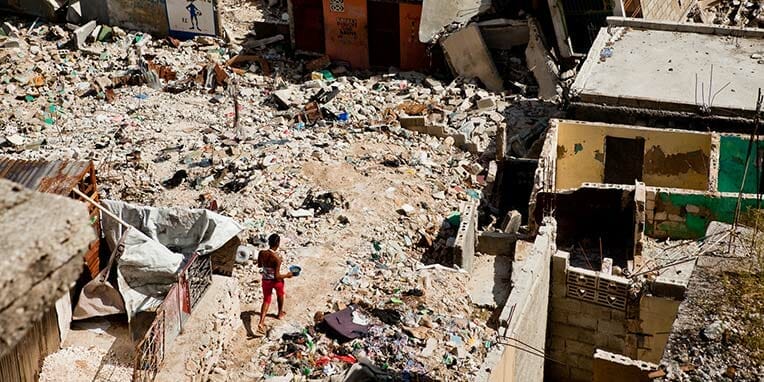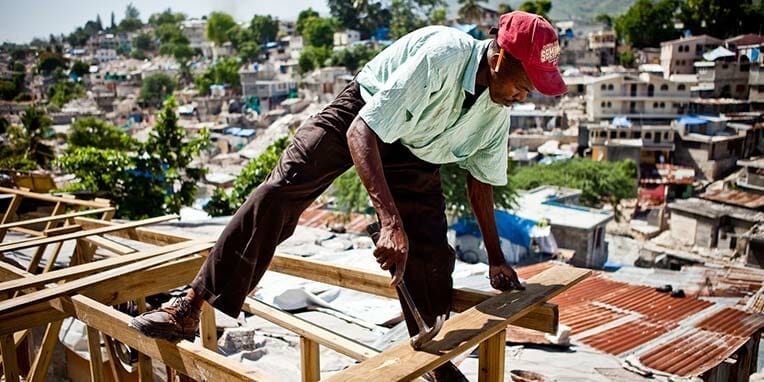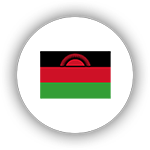Building back stronger in Haiti, neighborhood by neighborhood
Story by Melissa Silverman
Photos by Jeffrey Brown
In January 2010, Haiti was changed forever by a devastating earthquake. Within moments, entire neighborhoods crumbled, upending families and communities in the blink of an eye. With the support of the Office of U.S. Foreign Disaster Assistance (OFDA), PCI worked with partners to pull from the wreckage an entirely new approach to humanitarian assistance - a pioneering method of lifting up local voices and supporting community-driven change.
"Having lived in Haiti for the first 20 years of my life and visited many times after that, I was able to gauge at first sight the magnitude of the devastation," said Pascale Wagner, a senior PCI staff member who was on the ground in 2010. "All my bearings and references were gone, lost, turned into mounds of rubble. The human losses and suffering were unbearable. Rebuilding Port-au-Prince was going to be a huge challenge, and there was no time to be wasted."

Even before the earthquake, the families living in Ravine Pintade near downtown Port-au-Prince were vulnerable, with much of the community living in poverty without access to safe sanitation. The earthquake's destruction in this area was unimaginable, instantly rendering 75% of houses uninhabitable. Over 3,000 neighbors were killed, and the survivors moved in to tents on nearby roads and into camps. These temporary shelters tore at the fabric of the community, undermining livelihoods and social networks of trust, putting Ravine Pintade's recovery at risk.
"Part of the problem for humanitarian aid organizations was that a lot of our technical strategies and best practices were crafted in rural disasters in Africa. There simply was no way to use those strategies in a situation like downtown Port-au-Prince," said Jim DiFrancesca, PCI's Senior Director of Humanitarian Assistance and Resilience. "People didn't know how to remove large scale rubble. They didn't have access to heavy machinery. They didn't know how to put shelters down for all of the people who lost houses. It required that we generate a whole new way of responding to crises."
With the support of the U.S. government, PCI offered another way. Instead of traditional disaster relief, our team partnered with community leaders to create the conditions for sustainable recovery and rebuilding. We believed that with the right voices at the table, we could meet immediate humanitarian needs while addressing the deeper challenges of pre-existing vulnerabilities, laying the foundation for a safer, healthier, and more resilient neighborhood for years to come.

So, PCI partnered with community leaders to determine what it would take to get families out of tents and camps and back into their communities. This included removing rubble and addressing immediate shelter and sanitation needs, but it also accounted for deeper challenges, from settling land disputes, reducing vulnerability to future disasters, and improving lighting, to installing walkways, roads, and water and sanitation systems. This methodology, known as the Neighborhood Approach, worked to build long-term solutions to enhance livelihoods, build community trust through safe gathering spaces, and leave a platform where recovery could take place.
"We took a huge risk, but we were right in thinking that the emergency was the right time to address long-term vulnerabilities," DiFrancesca said. "To get people set up so they could recover versus only putting a shelter down wherever you can find space."
In 2019, nine years after the earthquake, PCI returned to Ravine Pintade to conduct a rigorous follow-up study and analysis of the program. The results were remarkable.
The Neighborhood Approach increased the value of land and housing, increased the presence of small businesses and implemented drainage systems that significantly decreased flooding and mud that was common before the earthquake, which reduced vectors for disease. The temporary shelters erected by the project had been formalized into more permanent houses and had outlived their original intended lifespan by 5 years. The project's retaining walls, pathways, stairs and much of the water system continue to be maintained and appreciated.

"What we did clearly worked," DiFrancesca said. "I don't think people realize how difficult it was for our team to be there and the significance of seeing those structures still in place years later. It made me realize just how important good work is after a crisis."
The installation of walkways, lighting and creation of public space promoted safety and encouraged community gathering places. Residents reported strengthened relationships, an improved health environment and a better neighborhood for the elderly, children, and those with disabilities. Most importantly, local residents voted with their feet: Ravine Pintade saw a population increase of 25% over pre-earthquake levels.
After a natural disaster of unthinkable proportions, this community built back better than before through a collaborative effort using an innovative, bold approach that centered around people, families and communities, strengthening the beating heart of this previously devastated Haitian neighborhood.
"I was very fortunate to be part of the PCI team in Haiti," Wagner said. "The partnerships that we developed then, and the innovative and sound interventions that we implemented in difficult conditions and in a context where so many had lost hope are a reminder that everything is possible."












